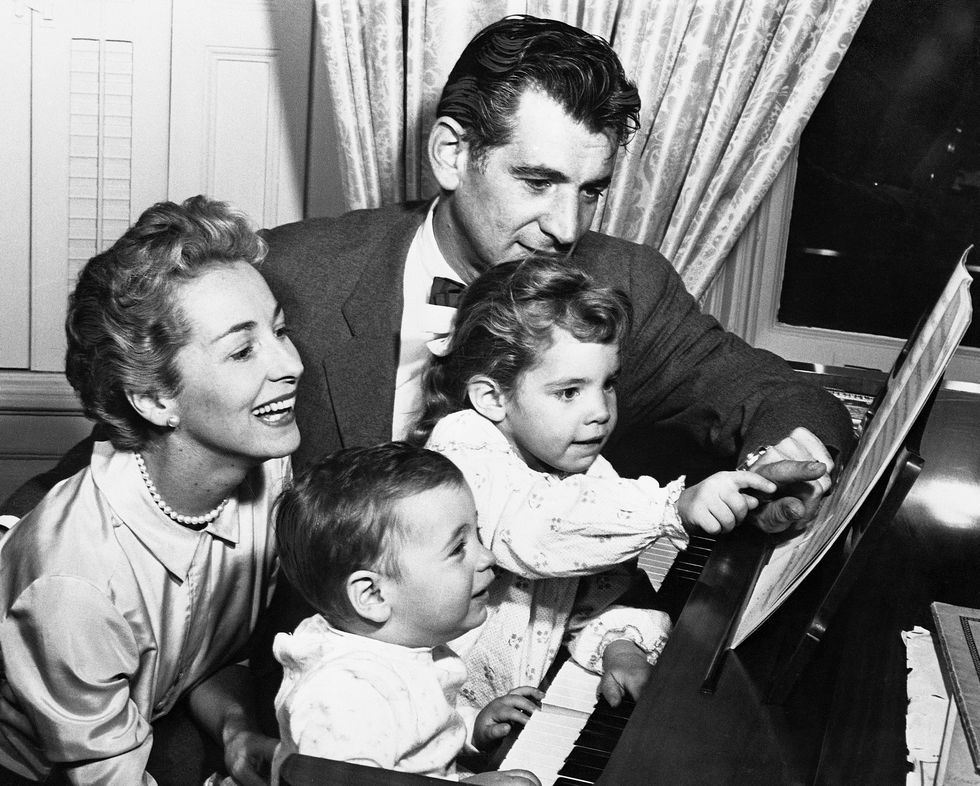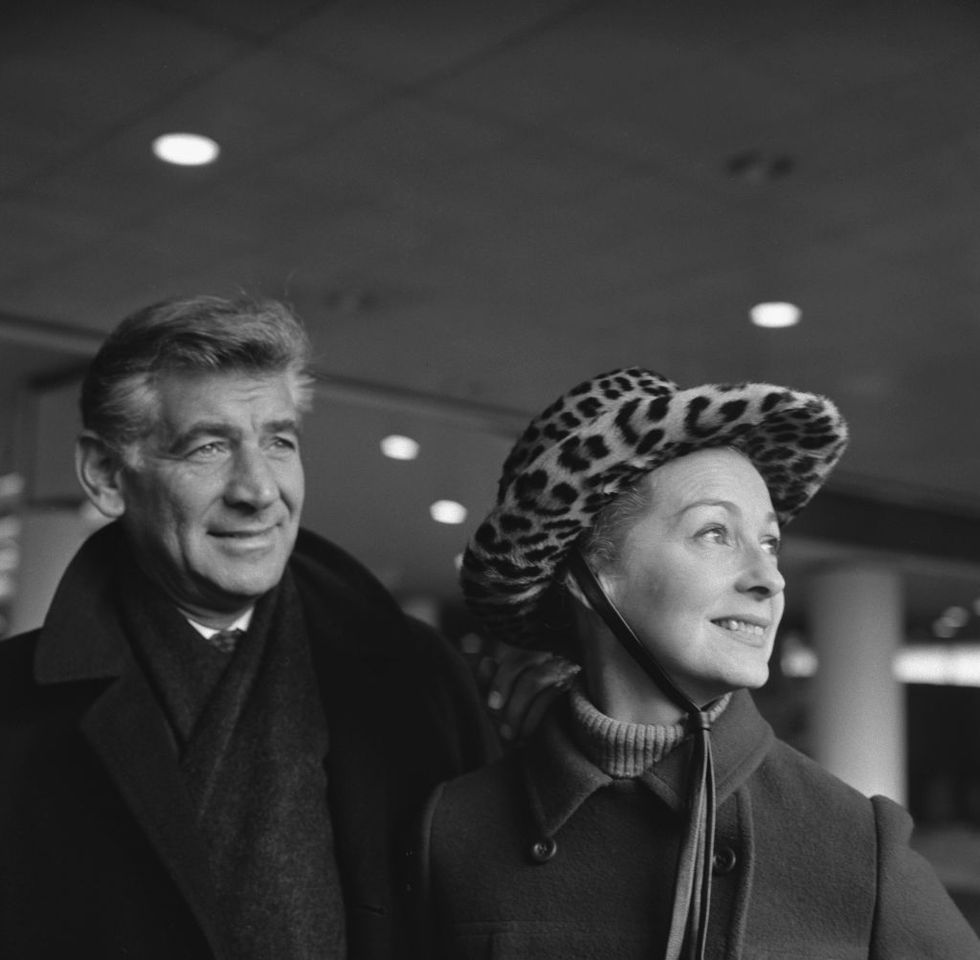Maestro Very Nearly Does Felicia Montealegre Justice
Spoilers ahead for Maestro.
There are endless tales—repeated ad nauseam, either as commendable example or cautionary tale—of the woman who washed away her wishes at the river of her husband’s genius. The more generous rendering of this story is not a washing away but a Biblical washing of: of feet, an act of love as symbolically powerful as it is humbling. Felicia Montealegre Bernstein, portrayed by a luminous Carey Mulligan in Bradley Cooper’s new biopic Maestro, does not match either of these images precisely. Like so many women destined to carry “wife of [insert legend]” forever in their biographies, she is neither and both.
That’s a fine line Maestro walks with bold gusto, if imperfect balance. Cooper—the film’s director and the actor portraying Felicia’s husband, the celebrated conductor and composer Leonard Bernstein—makes his efforts obvious as he carves into a complicated marriage and extracts the woman in it. He is quick to demonstrate his understanding that Felicia, however kind and forbearing she might have been, was never Lenny’s naive subordinate. She gave of herself willingly but also strategically: She understood that marrying Lenny was to merge herself not only with a whirling dervish of energy and ambition, but with a bisexual man whose desires she would and could not satisfy alone. And she used their partnership to her own professional advantages as well; some of the best moments in Maestro occur when Cooper and Mulligan act out the exhilaration of the couple’s creative union. (A scene in which they become active co-participants in an On the Town rehearsal together is of particular delight, and equal emotional weight.)
Still, Cooper is just as eager—if not more so—to examine the Felicia who gave more than she ever expected to give. When the journalist Edward Murrow interviews the couple on TV in one of Maestro’s early scenes, he asks the multi-hyphenate Lenny what the musician considers his “primary” occupation, then directs a similar but refracted question to Felicia: Does she herself have time for interests beyond acting? “Well, it gets pretty hard to do much more than take care of this household,” she replies. The scene fades into the next before Murrow can even finish asking Felicia her thoughts on music.
This trend continues as the movie moves into the 1960s and deeper into the eventual breakdown of the Bernsteins’ marriage, when it’s as if the camera’s view of Felicia zooms in too close, blurring its focus in the process. The script can’t find a way to address all of her nuances, especially as it attempts to do the same for an increasingly erratic Lenny. There’s so much attention paid to what Felicia must endure and forgive as Lenny’s partner—or, as she puts it to one friend, what she must “survive”—that there’s not enough emphasis on what she, nevertheless, managed to do.
The real-life Felicia—born in San José, Costa Rica, in 1922 and raised in Santiago, Chile—immigrated to New York City in 1944 and enrolled in drama school, adopting her mother’s maiden name for the stage. As Maestro depicts, she met Lenny through her piano teacher, the Chilean pianist Claudio Arrau; he introduced the couple in 1946, leading to a short engagement that ended in 1947. What the film mentions but doesn’t depict is Felicia’s separate romantic relationship with the actor Richard Hart from 1948 to 1951—during which he died of an apparent heart attack. It was only after this affair that she reunited with Lenny, and they were once again engaged by the end of the summer of 1951.
By that point, Felicia was indeed an established actress in America, both on the stage and screen: Beyond Broadway, she took on roles for TV at the studios that would one day merge under CBS and NBC. In the ‘60s and ‘70s, she engaged in numerous activist initiatives, including chairing the Women’s Division of the New York Civil Liberties Union; protesting the war in Vietnam; raising funds in a controversial campaign for the Panther 21 members of the Black Panther party; and working in Chile for Amnesty International. Maestro depicts these years in vivid color—an abrupt shift from the film’s earlier black-and-white scenes—yet omits many of their most revealing events. The script includes multitudinous mentions of Felicia’s activities, but only occasional scenes of her doing them, instead piling on instances that underscore the confusion and jealousy lurking inside the Bernsteins’ marriage.
There is a logic to this sort of framing. One could argue (and many have) that Cooper was never trying to tell a complete story of Leonard Bernstein, and certainly not of Felicia Montealegre, but rather of a specific dynamic within their marriage. That’s all well and good, and Maestro very nearly succeeds in this goal. But any married person can tell you such a dynamic is in and of itself a result of the spouses’ interlocking nuances, many of which must be examined and re-examined over and over again to make any sense of the marriage itself. And in that regard, Cooper can never quite can get a finger on Felicia the woman for want of Felicia the wife.
In one later Maestro scene, a pair of Felicia’s friends and colleagues—Cynthia and Mendy—start fretting over her, and the camera slowly closes in until she alone fills the frame, insisting she’s “busier than ever.” (Cynthia points out “busier” isn’t the same as “better.”) When Mendy tells her he’s “greedy for as much of you as I can get,” Felicia smiles her winningest smile and tells him, “I’m all yours.” Only we, the audience, watch her face fall seconds later, all too aware of the lie she’s just told.
There is so much to love about these moments, and about Maestro’s overall depiction of Felicia, that I’m hesitant to critique it at all. Mulligan is a wonder; Cooper’s directorial vision is apparent; I cried precisely when I’d imagine I was expected to cry. I adored Lenny and Felicia together, and could feel the love between them like a tangible presence in the theater. But as the film spends much of its last half hour depicting Felicia’s battle with lung cancer, from which she died in 1978, I found myself wondering how much of this very real woman I’d missed outside Maestro’s narrow frame.
It is, of course, intentional that the film’s key art features Felicia viewed from behind. This is also the imagery of the film’s last scene, when a younger Felicia, rendered once again in black-and-white, turns away from our gaze. It seems both a symbolic narrative gesture and an implicit acknowledgment of what the film can’t do: see Felicia from straight-on. As Lenny finishes up an interview in these final moments, he repeats a line spoken by Felicia earlier: “Any questions?” (This is also a thematic callback to Maestro’s epigraph, a Bernstein quote: “A work of art does not answer questions; it provokes them.”) But as the camera cuts to his beautiful wife, smiling before she puts her back to us, the answer is all too obvious—and no less frustrating.
Lauren Puckett-Pope is a staff culture writer at ELLE, where she primarily covers film, television and books. She was previously an associate editor at ELLE.



